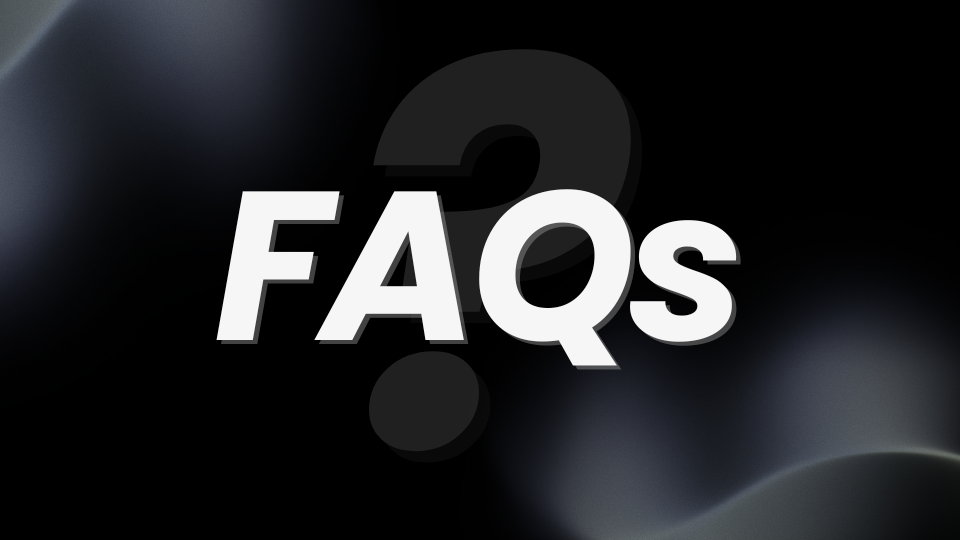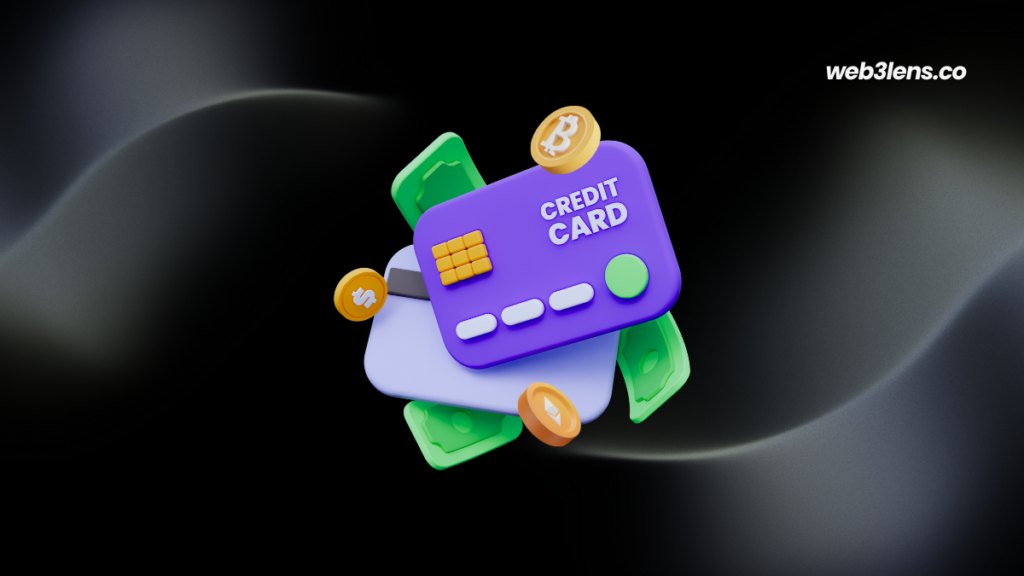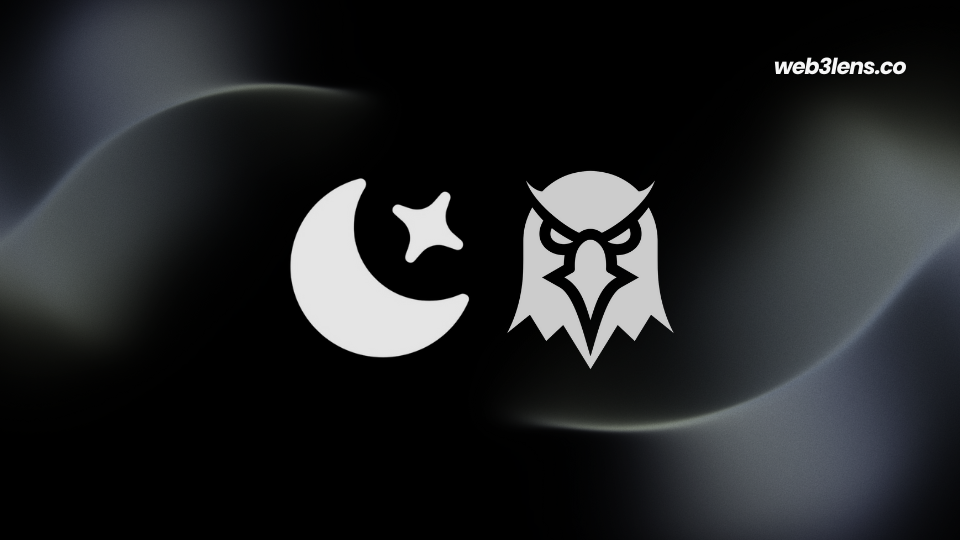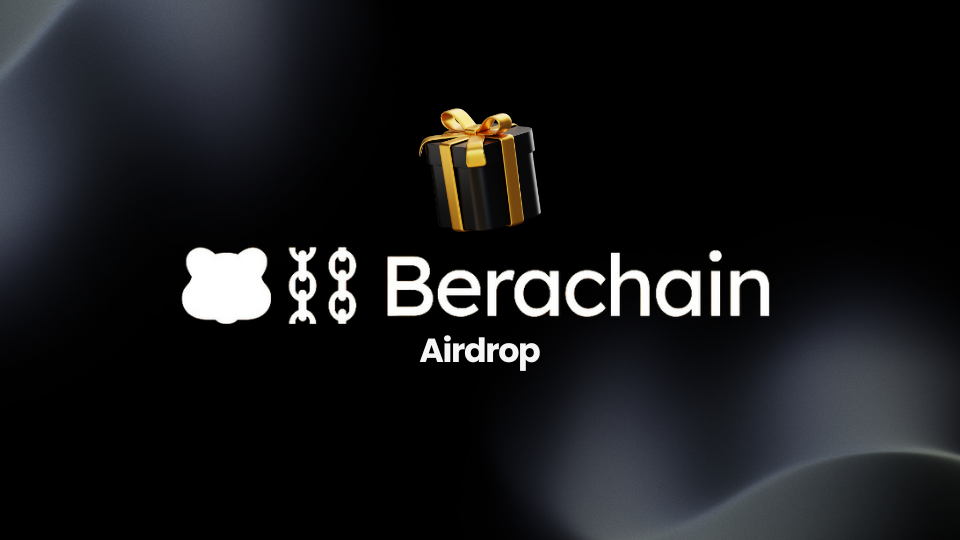
Introduction
In this fast ecosystem of crypto, new concepts continually appear. One term that has gained significant hype is the Consumer Token Offering (CTO). If you’re new to crypto, trying to understand all these fancy words might look difficult. No worries, Web3Lens got you!
This article aims to explain what CTO means and how it plays a crucial role in our ecosystem. We’ll take a look at the complexities of Consumer Token Offerings, understanding their purpose, benefits, and real applications.
By the end of this article, you’ll have a good understanding of CTOs and why they are gathering attention from everyone in crypto.
👉 Want to learn more? Head over to our guides 📚
What is Consumer Token Offering (CTO)?
A Consumer Token Offering (CTO) is a fundraising method where startups (usually blockchains) issue tokens directly to their community. These tokens grant access to a product or service within their ecosystem. Unlike Initial Coin Offerings (ICOs) focused on speculation, CTO tokens are designed for practical use.
In some sense, CTOs are similar to crowdfunding, but with a twist: supporters receive tokens that they can use within the company’s platform once it’s live. They boost community engagement right from the launch on mainnet and secure early adopters, offering strong value and utility. For crypto startups, it’s an innovative way to raise money, while for consumers, it’s an opportunity to support their favorite projects and benefit from exclusive services.
To make it short, CTOs are tokens with real applications within their ecosystems, making it a win-win situation for both the company and the users.
Consumer Token Offerings (CTOs) differ from Initial Coin Offerings (ICOs) and Security Token Offerings (STOs):
- CTOs focus on utility, helping the blockchain to attract active and engaged users right from the start.
- ICOs often look for speculative investments, with tokens traded for profit rather than real use cases.
- STOs are similar to traditional securities like stocks, offering a legal environment and regulatory compliance but requiring a strong legal background from the team.
While ICOs and STOs primarily appeal to investors, CTOs are designed for end-users seeking real benefits within a project’s ecosystem. It seems like CTOs are the best option when it comes to increasing user activity at launch.
When the product is live on mainnet, users receive their tokens and can use them accross the ecosystem or sell them for profit.
👉 Discover how to spend you CTO tokens with a crypto card 💳
Why is Consumer Token Offering (CTO) so interesting?
New projects prefer to launch a CTO because it provides a creative way to raise funds while building an engaged community. We often witness organic marketing and high engagement, as supporters simply love to promote the project. CTOs are known to provide long term value, which is a mandatory criteria for most crypto investors looking for “safe profits”.
One great example of a successful CTO is Brave Browser. The team has created the BAT token (Basic Attention Token) that is rewarding users for their usage of the web browser. The community loved it and started to farm to spend their BAT within Brave’s ecosystem.

How does Consumer Token Offering (CTO) work?

The process involves different key stages, starting from the conception stage to the final execution. It begins with ideation and planning, where the project’s goals are defined, whether the aim is to raise funds, build a community, or both. A deep market research is done to identify the target audience (persona) and analyze competitors. Following this, the team drafts a detailed whitepaper, a well-known document in crypto that serves as a blueprint. It outlines the goals, the value proposition, token economics, and a roadmap with each milestone from conception to deployment and updates.
Smart contracts play an important role in a CTO, the smart contracts functions as the backbone of the entire process. They manage the issuance, distribution, and features of the tokens, ensuring that conditions are met without human intervention. The security of this code is vital to maintain trust within the community, which is why audits are made by famous firms in web3.
A marketing strategy is then designed to build awareness and attract potential investors. The team will work on its digital presence and inform their users about key partnerships, development milestones and everything related to the project through their socials (posts, AMAs…).
The token sale is often divided into pre-sale and public sale phases, with clear parameters like soft and hard caps, token pricing, and distribution methods. KYC (Know Your Customer) and AML (Anti-Money Laundering) procedures are implemented to verify investors for regulatory approval reasons. Upon launching the CTO, tokens can be distributed on-chain or by a centralized exchange.
Post-launch, the project continues to develop according to its roadmap, with continuous communication to keep the community engaged and informed. This structured approach ensures that the CTO not only achieves its financial goals but also sets a loyal, active user base for sustained growth.
How to create consumer tokens?

There are several steps to creating the users tokens, starting with the development of the token using smart contracts standards such as ERC-20 for EVM compatible chains (Solidity). Developers write the code that defines the token’s characteristics, including its supply, distribution, and functionality. Once the smart contract is tested and audited for security vulnerabilities, it is deployed on-chain. The token is now live on the network, whether it is on a Testnet or Mainnet.
Token economics and whitepaper preparation are also part of this process. Designing tokenomics can be tricky as there are multiple parameters that come into play: supply, distribution, and incentives. A good whitepaper provides an overview of the project, detailing the problem it is solving, the technology behind it, and the roadmap for future development.
The creation of consumer tokens also involves some legal aspects that cannot be overlooked. Compliance with regulatory requirements is essential to avoid legal issues. Most startups will hire legal advisors to make sure their business adheres to jurisdictional regulations, such as anti-money laundering rules.
Consumer Token Offering (CTO) recent growth
At Web3Lens, we witnessed a significant growth in CTOs, reflecting a broader acceptance and enthusiasm within the ecosystem. According to recent market data, the total capital raised through CTOs in 2022 alone exceeded $1 billion, which is a major increase from the previous year. Analytics firms report an uptick in the number of projects choosing CTOs over other traditional fundraising methods. DappRadar, as an example, indicated that the number of active CTO projects has grown by 30% year on year, highlighting the increasing appeal of this fundraising model. This data underscores the rising confidence among both startups and investors in the utility and potential long-term benefits of CTOs.
When comparing the growth of CTOs to other token offerings like ICOs and Security Token Offerings (STOs), CTOs have demonstrated more sustainable and steady growth. While ICOs experienced a boom-and-bust cycle, peaking in 2017 and then rapidly declining due to regulatory failures and market conditions, CTOs have shown resilience and adaptability. STOs, which are compliant with regulatory standards, have grown at a slower pace due to the complexities involved in adhering to legal requirements. On the other hand, CTOs strike a balance by offering utility and community benefits while often navigating fewer regulatory obstacles. Notably, sectors such as decentralized finance (DeFi), gaming, and content creation are seeing the most activity in CTOs. Projects in these domains leverage consumer tokens to provide access to exclusive financial services, immersive gaming experiences, and premium content, respectively. These industries benefit immensely from the engagement and utility that CTOs offer, making them fertile ground for future growth.
In summary, the recent market data and trends surrounding CTOs reflect a strong and growing segment of the cryptocurrency landscape. With their focus on utility, community engagement, and fewer regulatory hurdles, CTOs are well-positioned to continue their run. The sectors of DeFi, gaming, and content creation are particularly active, leveraging the unique advantages of CTOs to innovate and conquer market share.
As these trends continue, we can expect to see even more creative and impactful applications of consumer tokens in the coming years.
Creative examples of Consumer Token Offerings (CTO)
Civil Media leveraged a Consumer Token Offering (CTO) to support its journalism platform, aiming to create a decentralized, community-driven model. They issued the Civil token and allowed users to participate in governance, promoting transparency and accountability in journalism. The team faced many challenges such as a limited understanding of blockchain among their target audience, Civil Media’s initiative led to a successfully funded platform that helped readers and journalists alike. The CTO participated in meeting fundraising goals while fostering a dedicated community, though it also highlighted the need for better educational resources on decentralized technologies.
Kik’s CTO initiative with the Kin token aimed to rework the messaging app ecosystem by integrating a crypto economy. This move allowed users to earn and spend Kin within the platform, increasing user engagement and creating new monetization opportunities. However, Kik faced significant regulatory scrutiny, particularly from the U.S. Securities and Exchange Commission (SEC), which questioned whether Kin was safe. Despite these legal issues, Kik managed to advance its vision, using the CTO as a tool to innovate within the messaging space. The ongoing regulatory battle serves as a case study in navigating legal challenges while pushing the boundaries of blockchain applications.
BlockStack‘s CTO was aiming to give users control over their data. The Stacks (STX) token facilitated decentralized app creation, enhancing both security and privacy. Key milestones included achieving SEC qualification, which added a layer of legitimacy to their offering. Community reaction was largely positive, as users and developers embraced the platform’s commitment to decentralization. This approach not only validated BlockStack’s vision but also set a precedent for how regulatory compliance can coexist with groundbreaking technological advancements.
Everipedia utilized a CTO to construct a decentralized encyclopedia, employing the IQ token to incentivize content creation and curation. This unique approach aimed to democratize information, allowing anyone to contribute while ensuring high-quality content through token-based governance. The challenges included educating users on the complexities of blockchain and balancing decentralization with content quality. Everipedia successfully created a robust, user-driven knowledge base, demonstrating the transformative potential of CTOs in the information sector. The project highlighted the importance of user engagement and the innovative use of tokens to drive community participation and content integrity.

Benefits of Consumer Token Offering (CTO)
The regulatory environment surrounding Consumer Token Offerings (CTOs) is relatively more accommodating compared to other token offerings like ICOs and STOs. CTOs focus on utility rather than financial returns, often falling outside the securities regulations that burden ICOs and STOs. This ease of legal compliance attracts startups looking to sidestep complex legal hoops while still raising funds.
Additionally, regulatory authorities are more flexible towards consumer-focused tokens, reducing the legal risks involved. This streamlined compliance process makes CTOs a compelling option for businesses eager to innovate without facing excessive legal barriers.

CTOs are typically less speculative than ICOs, which often attract investors looking for quick profits. With a stronger focus on utility and long-term engagement, CTOs are inherently designed to add value within their ecosystems. Data from cryptocurrency market analysts indicates that tokens issued in CTOs experience less price volatility than those in ICOs, underscoring their stability. Expert opinions also highlight that the utility-based nature of CTOs reduces speculation, making these offerings more appealing to consumers rather than just investors looking for speculative gains. This shift in focus fosters a more stable and engaged user base, contributing to the project’s sustained growth and development.
Accessibility is another strong suit of CTOs. They democratize investment opportunities, allowing everyday consumers and smaller investors to participate. Unlike STOs, which often come with high entry barriers and regulatory requirements, CTOs offer a more inclusive platform for participation. This inclusivity brings a diverse group of stakeholders into the ecosystem, enriching the community and enhancing user engagement. Furthermore, the transparent nature of blockchain technology adds another layer of trust and accountability. By recording all transactions on an immutable ledger, CTOs ensure that all operations are transparent, fostering a sense of trust among users. This transparency and inclusivity collectively contribute to the development of robust ecosystems, as exemplified by projects like Brave and Civil Media, where the consumer tokens have become integral to their operational and financial ecosystems.
How are CTOs viewed by regulators?
Consumer Token Offerings (CTOs) regulatory is a complex department, shaped by varying approaches from regulatory bodies worldwide. In general, CTOs focus on utility rather than financial returns, which means they often escape the rigorous scrutiny applied to securities offerings. For instance, in the United States, the Securities and Exchange Commission (SEC) has been more lenient towards utility tokens compared to security tokens, provided that they genuinely offer functional use within a specific ecosystem.
Similarly, in countries like Switzerland, utility tokens are relatively less regulated, as long as they are not marketed as investment opportunities. This creates an environment where projects can innovate and raise funds without facing excessive legal barriers, unlike more heavily regulated Security Token Offerings (STOs).
Different countries have adopted diverse points of views on CTOs, reflecting their broader views on cryptocurrency. For example, Switzerland and Singapore have emerged as crypto-friendly jurisdictions, offering clear guidelines that have attracted numerous blockchain startups. These countries differentiate between various types of tokens—utility, payment, and security—providing a more balanced regulatory framework. On the other hand, nations like China and India have taken a more cautious approach, imposing stringent regulations or outright bans on certain types of token offerings. In the European Union, the regulatory environment is still complex, but the proposed Markets in Crypto-Assets (MiCA) regulation aims to provide a comprehensive framework covering all digital assets, including utility tokens, which could bring more clarity and standardization across member states.
High-profile CTOs have not been entirely free from regulatory scrutiny, setting precedents and serving as case studies for the industry. A notable example is the Kik by Kin initiative, which aimed to integrate a cryptocurrency economy within its messaging app. The SEC argued that Kin tokens were sold as unregistered securities, leading to a prolonged legal battle that highlighted the importance of clear regulatory guidelines. Another example is the Civil Media project, which faced challenges in educating both regulators and the public about its unique model of using tokens for governance and media credibility. Despite these hurdles, Civil managed to navigate the regulatory landscape fairly successfully, although it had to rework its token distribution model to align with legal expectations. These cases underscore the necessity for emerging projects to perform thorough due diligence and seek legal counsel to ensure compliance, as regulatory actions can significantly impact project viability and investor trust.

In summary, the regulatory environment surrounding CTOs is multifaceted, with different countries adopting varying stances that reflect their broader attitudes towards cryptocurrencies. While some jurisdictions offer more lenient and clear-cut guidelines, others impose stricter regulations that can complicate the fundraising process. Notable cases like Kik by Kin and Civil Media illustrate the challenges and successes in navigating this landscape, emphasizing the critical role of legal compliance in the long-term success of Consumer Token Offerings.
This evolving regulatory scenario requires continuous monitoring and adaptability from projects aiming to leverage CTOs for raising funds and building sustainable ecosystems.
Other meanings of “CTO”
Community Takeover
A community takeover in the crypto world is a fascinating phenomenon where a decentralized community collectively assumes control over a blockchain project or cryptocurrency. This shift often occurs when the original developers or founders either step down or lose the faith of the community. Unlike traditional corporate takeovers, where ownership transfers to a single entity, a community takeover redistributes control among a broad network of participants, emphasizing the decentralized ethos of blockchain technology.
Typically, this process begins with a growing dissatisfaction within the community about the project’s direction, transparency, or governance. Users who are passionate about the project’s core vision but disillusioned by its current management often rally together, organizing through forums, social media, or other decentralized communication platforms. They draft proposals, vote on key decisions, and sometimes even volunteer their skills for coding, marketing, and legal compliance. For example, the Steemit platform experienced a community takeover when a faction of its users migrated to Hive, a new blockchain, after disagreements with the original management.
The mechanics of a community takeover involve several steps. First, there is usually an informal consensus among community members about the need for a change in leadership. This is followed by formal discussions, often conducted via decentralized governance platforms where proposals for the takeover are submitted and voted upon. If the proposal gains enough traction, a new team or governance structure is established, often requiring the migration of assets and services to a new or forked blockchain. The entire process underscores the democratic potential of blockchain technology, allowing stakeholders to reclaim and reshape a project’s future.
Community takeovers present both challenges and opportunities. On one hand, the decentralized nature of such movements can lead to inefficiencies and disagreements, as decision-making is spread across a wide array of participants. On the other hand, a successful takeover can rejuvenate a project, bringing in fresh ideas, renewed trust, and a reinvigorated user base. Ultimately, community takeovers epitomize the principle of decentralization, proving that the power truly lies in the hands of the community. This dynamic showcases the unique resilience of decentralized networks, where collective action can pivot a project’s trajectory toward a more promising and aligned future.
Chief Technical Officer
The role of a Chief Technical Officer is crucial for the strategic and technical advancement of blockchain projects. The CTO is the executive responsible for overseeing the technical aspects of a company’s roadmap, ensuring that all technological resources align with the organization’s goals. This role demands a deep understanding of blockchain technology, cybersecurity, and decentralized systems, as well as the ability to manage and inspire a team of developers and engineers.
The responsibilities of a CTO in crypto are multifaceted. At the core, they are tasked with designing and implementing the technical architecture of a project, which involves selecting the appropriate blockchain protocols, smart contract development, and ensuring the scalability and security of the platform. They also play a pivotal role in the decision-making process regarding technology stack and tools, helping to shape the long-term technological vision. For instance, Ethereum’s CTO, Vitalik Buterin, has been instrumental in driving the development of Ethereum 2.0, focusing on scalability and sustainability.
Moreover, the CTO must stay abreast of the latest advancements in blockchain technology and cybersecurity trends. This perpetual learning and adaptation are critical, as the crypto landscape is ever-changing and highly competitive. A successful CTO must also manage the integration of new technologies to keep the platform innovative and secure. This involves regular code audits, peer reviews, and stress testing to identify vulnerabilities. For example, the CTO of Binance, a leading cryptocurrency exchange, continually addresses security challenges to protect user assets and exchange integrity.
Another significant aspect of the CTO role is communication and collaboration. They must effectively bridge the gap between the highly technical development team and other executive branches of the organization. This ensures that technological insights are translated into business strategies and that the company’s vision is realized through its technology. Engaging with the community is also essential, as transparency and trust are pivotal in the decentralized world. Regular updates, participating in forums, and speaking at conferences are ways in which a CTO can maintain a rapport with both developers and users.
In summary, a Chief Technical Officer in the crypto industry is a linchpin, holding together the technical and strategic segments of a project. They are responsible for not only the technical architecture and security but also for steering the technological evolution of the project. By integrating cutting-edge technologies and maintaining robust communication channels, they ensure that the project adapts and thrives in the rapidly evolving crypto ecosystem. The role demands a blend of deep technical knowledge, strategic vision, and strong leadership to navigate the complexities of blockchain technology and foster innovation.
FAQs

What is a Consumer Token Offering?
A Consumer Token Offering (CTO) is a method by which companies raise funds by issuing digital tokens that provide utility within a specific ecosystem. These tokens grant users access to a product or service, rather than serving as a speculative investment. Essentially, a CTO functions similarly to a crowdfunding campaign, but instead of simply contributing money, participants receive tokens that can be used within the issued platform. This mechanism not only helps companies secure initial funding but also builds a community of engaged users who are likely to support the platform upon its launch and beyond.
Understand the difference between coins and tokens:
What differentiates CTOs from STOs and ICOs?
Consumer Token Offerings (CTOs) differ significantly from Security Token Offerings (STOs) and Initial Coin Offerings (ICOs) in their purpose and regulatory treatment. CTOs focus on utility, offering tokens that grant access to specific services or products within a project’s ecosystem. In contrast, ICOs are often speculative, issuing tokens that investors hope will appreciate in value, much like stocks. STOs, on the other hand, are designed to comply with securities regulations, offering tokens that represent ownership in an asset or company. This difference in focus means that CTOs typically face simpler regulatory requirements compared to STOs, which must adhere to stringent securities laws. Additionally, while ICOs have been associated with high volatility and speculation, CTOs aim for stable, long-term engagement by providing direct utility to the token holders.
What are the regulatory considerations CTOs should be working within?
Conducting a successful CTO requires navigating various regulatory considerations to ensure compliance and legitimacy. One of the primary factors is determining whether the token qualifies as a utility token rather than a security. Utility tokens, which provide access to a specific service or product, generally face fewer regulatory hurdles. However, thorough legal due diligence is essential to avoid misclassification. Other key considerations include adhering to Anti-Money Laundering (AML) and Know Your Customer (KYC) requirements to verify participants and prevent illicit activities. Additionally, companies must be aware of the varying regulatory landscapes in different jurisdictions, as the treatment of tokens can differ widely from country to country. Consulting with legal advisors who specialize in blockchain technology is crucial to navigate these complexities effectively.
What are some of the successful cases of CTOs?
There are several notable examples of successful CTOs that have made significant impacts in their respective fields. Civil Media, for instance, utilized a CTO to fund its decentralized journalism platform, allowing users to participate in governance and uphold journalistic standards. Another example is Brave, which launched the Basic Attention Token (BAT) to create a new model for digital advertising, rewarding users for their attention and protecting their privacy. Kik Interactive’s Kin token also stands out, integrating a cryptocurrency economy within its messaging app to foster user engagement and create new revenue opportunities. These successful case studies highlight the potential of CTOs to drive innovation and build sustainable ecosystems, illustrating the transformative power of consumer token offerings.
📚 Similar content you might like:
👉 Bitrefill Gift Card Honest Review 2024 💙
👉 Holyheld review: the best non-custodial crypto card? 💳
👉 Material Bitcoin review: Your trusted metallic wallet for Bitcoin storage 🔐
👉 How to make big profits with memecoins using Moonshot on Solana ? 🚀
📌 Never miss a new post! Follow us:
👉 Linkedin
👉 X (Twitter)
👉 Facebook
👉 This article is provided by Web3Lens, learn more about us here.



